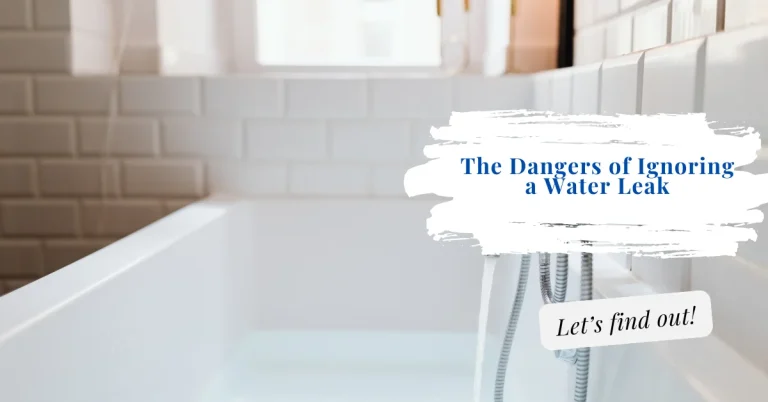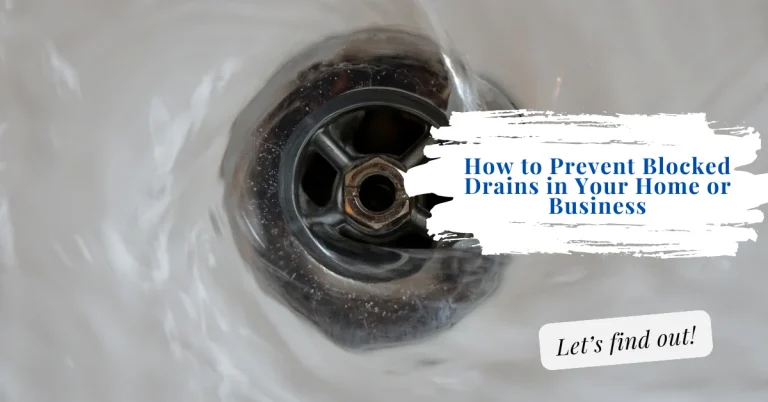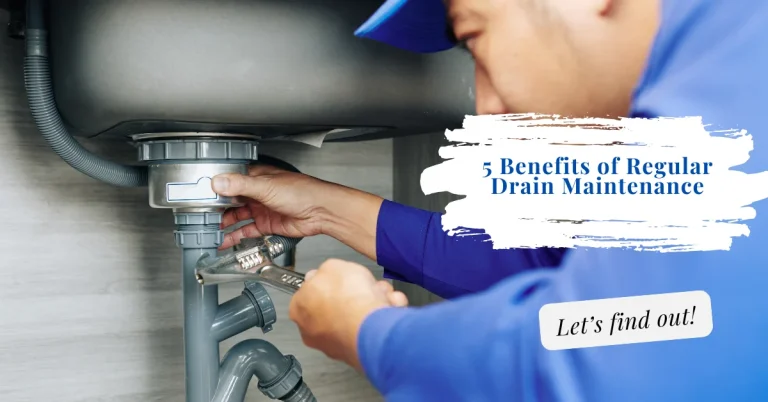Finding a water leak in your home could be very stressful. Whether it’s a small drip or a major flood, acting quickly helps mitigate the extent of the loss by stopping further damage.
Even small leaks, especially those behind walls or in cabinets, can cause extremely costly repairs. That’s why you should act quickly.
Take the following actions to guide you on what to do after discovering a water leak in your home.
1. Identify the Source of the Leak
The first step in dealing with a water leak is identifying where the water is coming from. It could be from a pipe, a roof, an appliance, or even from outside. Sometimes, the source is obvious, like a burst pipe under the sink, but other times, it might be hidden behind walls or floors.
Carefully look around to find the exact spot where the water leaks. If you can’t locate the source, you may need to call a plumber to help you identify it.
2. Turn Off the Water Supply
Once you’ve identified the leak, the next immediate step is to turn off the water supply to prevent more water from causing damage. If the leak is from a specific appliance, such as a washing machine or dishwasher, you can turn off the valve leading to that appliance.
For a more severe leak, like a burst pipe, you’ll need to shut off the main water valve to your entire home. The main valve is usually located near your water meter or where the main water line enters your house.
3. Assess the Damage
Once all the water is stopped, take some time to check on the effects of the leakage. Look out for waterlogged regions, soggy carpets, swollen walls, or any other evidence denoting damage caused by water.
The test will let you know how badly the situation is and whether you have to go for professional help in getting the issue corrected. It’s also a great time to snap a few photos of the damage, if possible, when you submit an insurance claim.
4. Call a Professional if Needed
Depending on the severity of the leak, you may need to call in a professional. For minor leaks, like a dripping faucet or a small pipe leak, you might be able to handle the repairs yourself.
However, for larger issues like a burst pipe, significant flooding, or damage to electrical systems, it’s best to contact a licensed plumber or water damage restoration expert. They have the expertise and equipment to fix the problem correctly and safely.
5. Dry Out Affected Areas
Drying out the affected areas as quickly as possible is crucial to prevent mold and mildew growth. Start by removing any standing water using towels, a mop, or a wet/dry vacuum.
Next, fans, dehumidifiers, and open windows are used to circulate air and speed up the drying process. If water has soaked into carpets, furniture, or walls, you may need to remove these items or consult a professional to ensure everything is thoroughly dried.
6. Repair the Leak
Once dry, the source of the leak will also have to be repaired simultaneously. By all means, fix a leaky faucet washer or any other connection around a pipe that may be too loose and causing concern.
For the more complicated problem—a cracked pipe in a wall—it is always worth picking up the phone for a professional who can do the work properly to prevent future leaks.
7. Inspect for Mold and Mildew
Even with this effort of drying, check for molds and mildew. The water that leaks is one of the best breeding spots for molds—spots that can cause serious health problems and wreck your house.
If there’s mold, you’ll notice a musty smell, or you’ll see spots on walls, floors, or ceilings. If you do find mold, be sure to take care of it right away.
With the small sections, you may clean with dilute bleach in water, but for larger infestations, you may have to look for a mold remediation professional.
8. Restore and Repair Damaged Areas
With the leak fixed and the area dried, it now may be time to repair anything else that was damaged. This may include patching drywall, replacing flooring, repainting the walls, or installing new insulation.
If the leak is serious, you may have to call a contractor in. Just remember that the materials have to dry out all the way before you start making fixes and the leak has to be closed up so you won’t do it again.
9. Check for Hidden Damage
Water can sometimes seep into areas you might not immediately notice, such as behind walls, under floors, or in your home’s foundation. It’s a good idea to check these areas for hidden damage, especially if the leak is significant.
You may need to use a moisture meter to detect dampness in these hidden areas. If you suspect there’s hidden water damage, consider hiring a professional to perform a thorough inspection.
10. Take Preventative Measures
After dealing with the leak, it’s important to take steps to prevent future leaks from occurring. Regularly inspect your home’s plumbing and roofing for signs of wear and tear.
Replace old or damaged pipes, seals, and appliances before they fail. You can also install leak detection devices that alert you to leaks early on, allowing you to take action before the problem gets worse.
11. Contact Your Insurance Company
If the leakage should be quite broad, now, you will need to file a claim put through by your home insurance. Take the time to call your insurance company right away so you can make that report and start the claims process.
Make sure to provide to them all documents supporting your claim: photos of the damages, repair estimates, and all applicable receipts for an emergency repair or service. Document all your communications with your insurance company for future record.
12. Monitor the Area
Even after repairs are complete, it’s important to monitor the area where the leak occurred. Keep an eye out for any signs of lingering moisture, such as discoloration, peeling paint, or a musty smell.
If you notice any of these signs, it could indicate that the area hasn’t fully dried or that there’s another leak. Regular monitoring can help you catch any problems early and prevent further damage.
Conclusion
Dealing with a water leak in your home can be really nerve-racking, but the following is key in helping keep destruction down and saving your house: The quicker you start cleaning, the better chance you have at keeping a little leak from becoming a huge disaster.
If unsure at any time, be sure to call in a professional to assist. And, as always, be prepared in advance for your home not to experience leaks in the future.
Don’t let a day pass if water has leaked into your house. This article is to be considered general information about protecting property and may inspire reaching out to a local professional business. For more information and other helpful tips about maintaining your home and preventing water damage, visit our website at.






